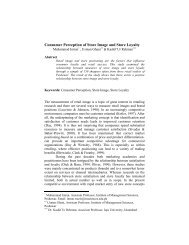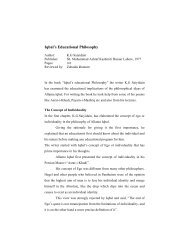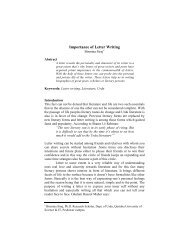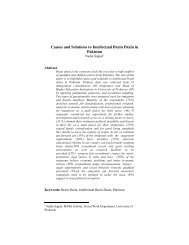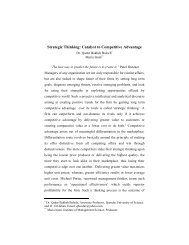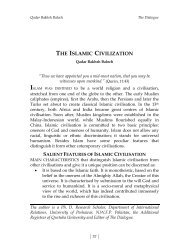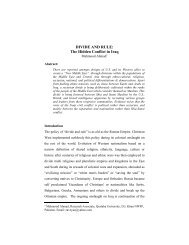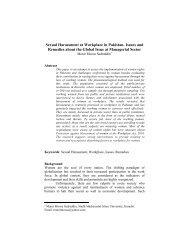COLD WAR POLITICS OF SUPERPOWERS IN SOUTH ASIA Abstract
COLD WAR POLITICS OF SUPERPOWERS IN SOUTH ASIA Abstract
COLD WAR POLITICS OF SUPERPOWERS IN SOUTH ASIA Abstract
You also want an ePaper? Increase the reach of your titles
YUMPU automatically turns print PDFs into web optimized ePapers that Google loves.
Premier Khrushchev paid his second visit to Afghanistan in March 1960.<br />
During this visit, he hailed the relations between the Soviet Union and<br />
Afghanistan as an “excellent example of peaceful coexistence and friendly<br />
relations between countries with different political and social systems.” He<br />
discussed the Pakhtunistan issue with the Afghan government and declared:<br />
“Historically as you know, Pakhtunistan has always been part of<br />
Afghanistan.” 78 Pravda, the Communist Party newspaper, also repeated<br />
Khrushchev’s stand on the Pakhtunistan issue. The Soviet pro-Afghan<br />
pronouncements on the Pakhtunistan issue turned into a dramatic display of<br />
Soviet support for Kabul during the third and most serious eruption of the<br />
Pakhtunistan issue in the 1960s. On 25 March 1961 a Pravda article by O.<br />
Skalkin, expressed full support to Afghan government and called Pakistan’s<br />
proposal for a plebiscite on the Pakhtunistan issue a “provocational Plan”<br />
which had originated in the CENTO military alliance. The article claimed that<br />
the disputed area, from which the U-2 flight had also started (Peshawar) lay so<br />
near Soviet territory that the Soviet Union could not remain indifferent to this<br />
dangerous dispute. 79 The Soviet government newspaper, Izvestia warned<br />
Pakistan that “it would be a serious mistake on Pakistan’s part to hope that the<br />
Soviet Union will remain indifferent to a military conflict” 80 in South Asia.<br />
This was a time when Moscow could afford to conduct its Asian policy<br />
without total reliance on European events and the Soviet Union played a<br />
balance of power game against the United States. The Soviet’s primary<br />
purpose was to use South Asia as a jumping-off place for more direct access to<br />
Southeast Asia and Persian Gulf area and as a staging area for outflanking<br />
China.<br />
Soviet Objectives in South Asia<br />
The Soviet leadership showed their will in South Asia to limit the US and<br />
China influence in the region. India cooperated with the Soviet Union and they<br />
moved from non-alignment to a kind of bi-alignment with the Soviets to<br />
91




